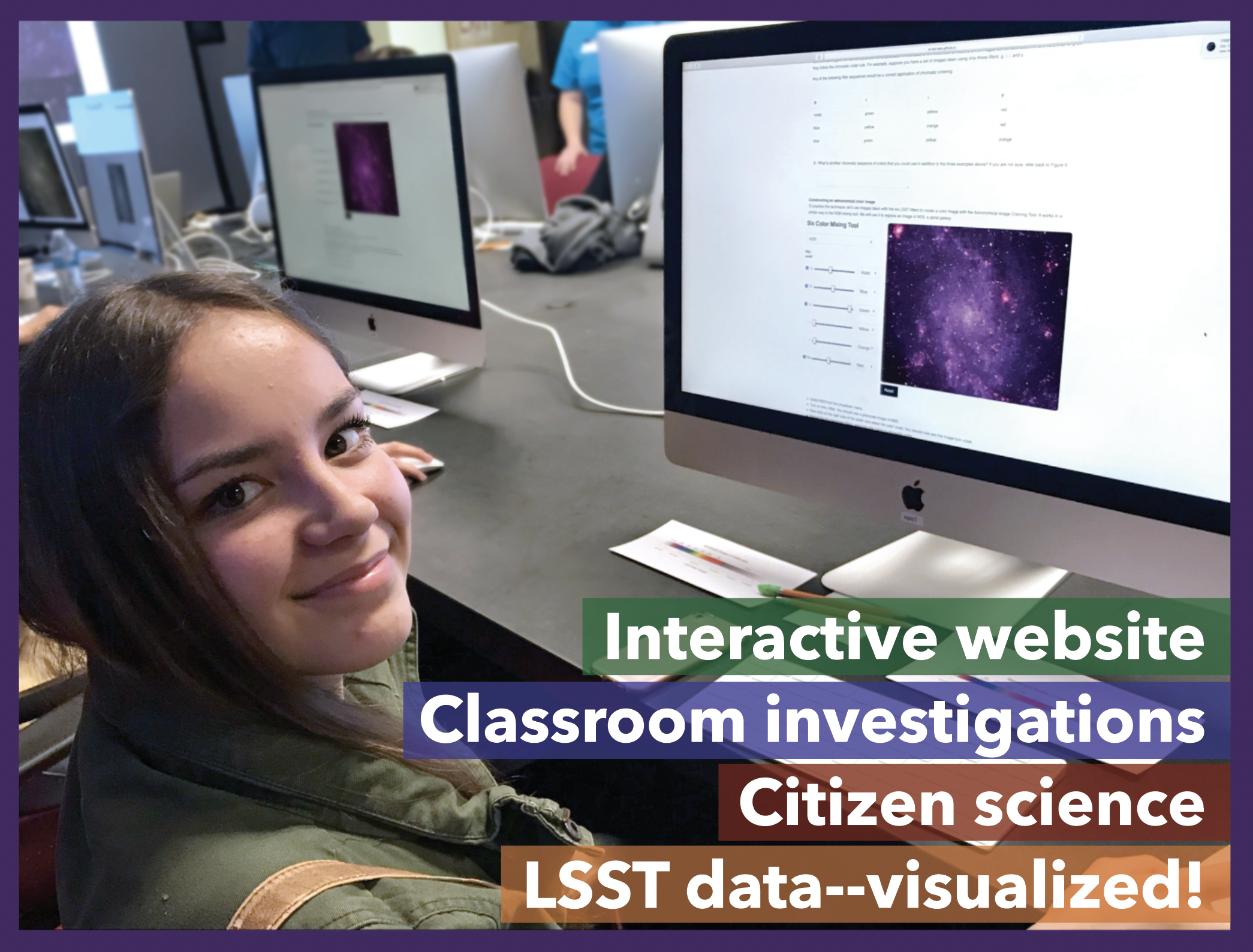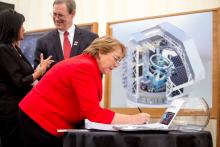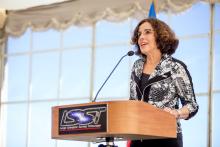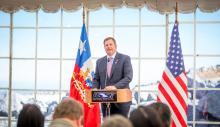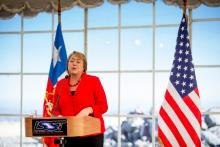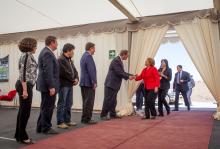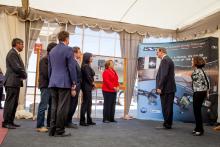LSST marks a major milestone today, with the traditional First Stone (Primera Piedra) ceremony taking place this afternoon on Cerro Pachón, Chile. While site leveling has already begun, laying of the first stone is a Chilean tradition marking the construction start for a new astronomical observatory. Chilean President Michelle Bachelet, U.S. Ambassador to Chile Michael A. Hammer, NSF Director France Córdova, and Charles Simonyi are among the dignitaries present to mark this start of summit construction.


